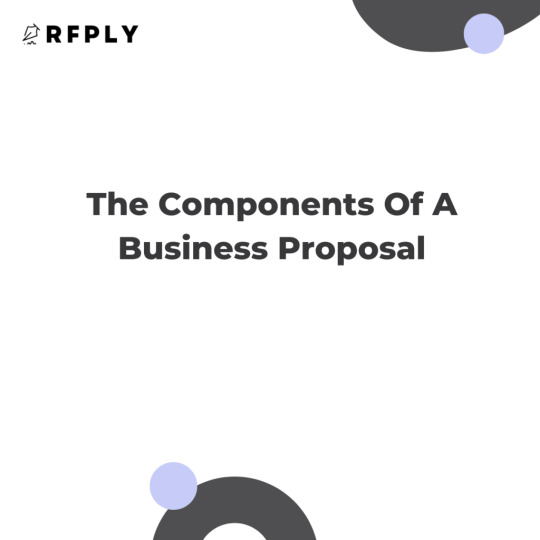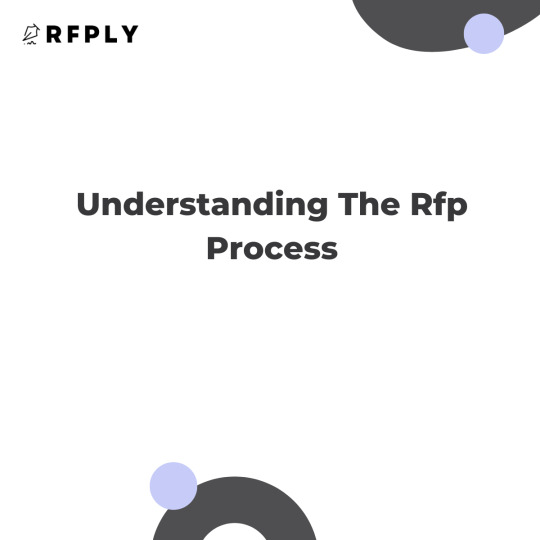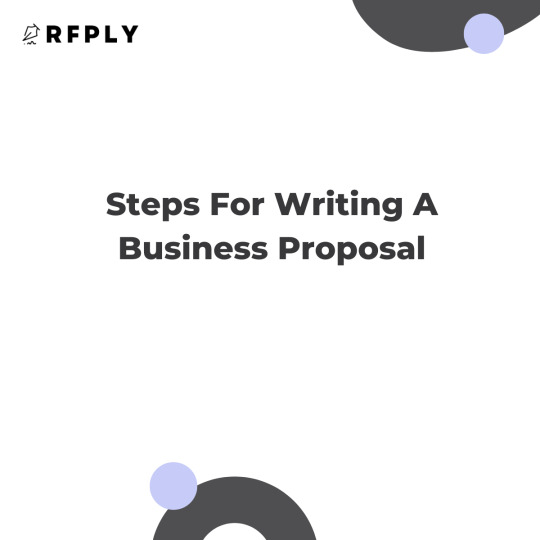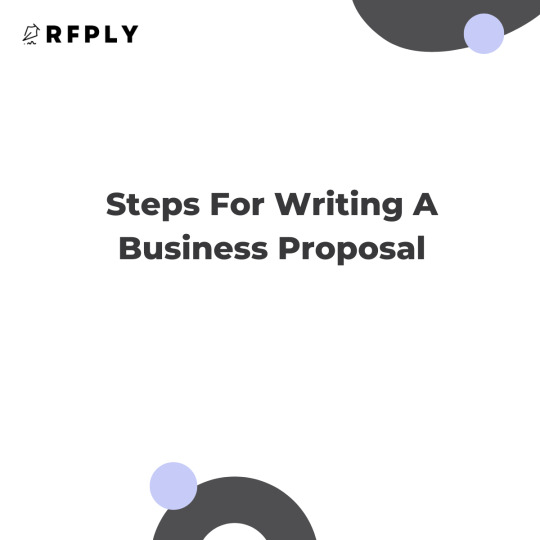#RFPProcess
Explore tagged Tumblr posts
Text
Stop Overcomplicating Video Production

Let’s get real for a second. You’re not in the business of making videos just to check a box. You’re doing it because you need to say something that matters—whether it’s to your employees, your stakeholders, or the public.
And if you're serious about that message, then you better be serious about who you work with. Because the wrong video partner isn’t just a waste of time and money. It’s a missed opportunity to connect, to lead, and to influence.
So let’s talk about how to find someone who actually gets what you're trying to do—and can help you do it right.
Know What You’re Trying to Say
Before you even think about sending out an RFP or jumping on a call with a production company, you need clarity. Real clarity.
What are you trying to achieve? Who is this for? Why should they care?
If you don’t have clear answers to those questions, no amount of fancy editing or cinematic shots will save you. The best video teams in the world can’t fix a muddy brief.
Take the time to sit down with your team and ask the hard questions. What problem are we solving? What action do we want people to take after watching? How do we want them to feel?
You’d be surprised how many big organisations skip this step and wonder why their video doesn’t land.
Your RFP Isn’t Just Paperwork
A lot of people treat the RFP like a chore. Like it’s just another hoop to jump through before they can get started.
Wrong.
Your RFP is your first chance to set the tone. To show that you know what you want. And to separate the pros from the posers.
Write it like you mean it. Be specific. Don’t just list deliverables—tell a story. Explain your mission. Show that you care.
Because the people reading it aren’t just looking for work. They’re deciding whether they want to work with you. And if your RFP feels lazy, guess what? You’ll get lazy responses.
Evaluation Is About More Than Numbers
Yes, scoring proposals is important. Yes, you should have criteria. But don’t get so caught up in ticking boxes that you miss the bigger picture.
Look for partners who get it. Who understand your audience. Who challenge your thinking. Who bring something to the table beyond “we’ve done this before.”
Experience matters. So does creativity. So does budget. But none of those things matter more than alignment. Do they see the world the way you do? Will they push back when you’re off track? Will they fight for your message?
That’s what separates a vendor from a true partner.
Talking Matters More Than Paper
Once you’ve read the proposals, it’s time to talk. And I mean really talk.
This is where you find out who’s just reading off a script and who actually wants to build something with you.
Invite shortlisted teams in. Ask them how they’d approach your project. Ask them what they’d do differently. Ask them what they’ve learned from past mistakes.
Pay attention to how they listen. Do they hear what you’re saying—or are they already planning their next pitch?
The best partners aren’t afraid to ask questions. They want to understand your goals, your challenges, your culture. They know that great work starts with trust.
Do Your Homework Before Signing Anything
Before you commit, dig deeper.
Talk to their past clients. Watch their previous work. Understand how they operate.
Who will be working on your project? What happens when things go sideways? How do they handle feedback?
This isn’t about distrust—it’s about due diligence. You wouldn’t hire someone without checking references. You shouldn’t choose a video partner without doing the same.
And don’t ignore red flags. If something feels off during the process, it probably is.
This Isn’t Just About Video
Choosing the right video production partner isn’t just about finding someone who can shoot and edit. It’s about finding someone who believes in what you’re trying to say.
Because when you get that right, something shifts. Your message lands harder. People pay attention. Things move.
It’s not about perfection. It’s about impact.
And in a world full of noise, that’s what makes the difference.
Great Work Starts With the Right Mindset
At the end of the day, this isn’t just procurement. It’s storytelling. It’s communication. It’s leadership.
So stop treating it like a transaction and start treating it like a partnership.
Be clear. Be bold. Be honest.
And find someone who shows up the same way.
0 notes
Text
#HOA#HOAManagement#RequestForProposal#HOARFP#CommunityManagement#HOABoard#VendorSelection#HOABestPractices#PropertyManagementTips#HOAGovernance#RFPProcess#HOAPlanning#BetterHOA#HOAProjects#RFPStrategy
0 notes
Photo

The Components Of A Business Proposal https://rfply.com/2023/03/07/the-components-of-a-business-proposal/?utm_source=tumblr&utm_medium=social&utm_campaign=proposaltemplates
0 notes
Text
How to write a request for proposal (RFP) correctly?

A request for proposal (RFP) is a document that solicits proposals from potential suppliers or contractors to provide goods or services to a company. RFP platform is often used in the procurement process to ensure that companies are getting the best value for their money when purchasing goods or services.
To write a request for proposal (RFP) correctly, follow these steps:
Define the scope of the project: Clearly define the scope of the project, including the objectives, deliverables, and any constraints or limitations.
Describe the selection process: Explain how proposals will be evaluated and the criteria that will be used to select the winning proposal.
Outline the requirements: Specify the requirements for the goods or services being requested, including any technical or functional specifications.
Set a timeline: Establish a timeline for the submission of proposals and any subsequent steps in the selection process.
Include any necessary documents: Include any necessary documents, such as a statement of work, budget, or previous examples of similar projects.
Request information on the supplier: Request information on the supplier's experience, capabilities, and capacity to deliver the goods or services being requested.
Provide instructions for submitting proposals: Clearly outline the process for submitting proposals, including any required format or content.
Review and revise the RFP: Review the RFP carefully to ensure that it is complete, clear, and accurate. Consider seeking feedback from colleagues or external experts to improve the RFP.
If you're looking for the finest platform for managing RFPs, ProcurEngine is one of the most dependable, user-friendly, enterprise-ready, and rapidly expanding best RFP software available today. It is a cutting-edge, cloud-based, digital RFP management platform. Visit our website by clicking the link for additional information.
1 note
·
View note
Link
An RFP or request for proposal is a document that requests a proposed solution to a stated client issue. A government or commercial client will solicit RFP documents to prospective bidders during a bidding process and in turn will receive proposals that detail each bidder’s solution.
0 notes
Text
7 Keys for Responding to an RFP

For many businesses, the first step in generating revenue is responding to a request for proposal (RFP). RFPs are invitations to submit a bid. Your bid will become the basis of any contract that is eventually signed. When responding to an RFP, it’s critical that you not only address all of the requirements listed in the document but that you also analyze the requirements to see if your business model is a good fit for this specific project.
1. Understanding the RFP Process
While every business and government agency has a slightly different RFP process, they all have three phases. In the first phase, an organization releases an RFP. They may post it on their website, send out a press release, or send an email to a list of potential vendors. The RFP will list a window of time during which response or bids will be accepted. The second phase is the screening phase. The company filters out companies that failed to meet the requirements or who do not seem to be a good fit. The company then selects a group of proposals as finalists. In the third phase, the finalists are evaluated, and a proposal is accepted. Once the proposal is accepted, the two companies will enter into a contract negotiation.
2. Evaluating Price Point
Successful businesses understand what their minimum price point is. They know that they cannot generate profits operating below a certain price point because of their fixed costs. Before going through the process of analyzing a lengthy RFP and working on a response, it makes sense to calculate the price range the company will accept. If the maximum acceptable price is below your minimum price point, there is no need to waste effort bidding on a contract you will not get.
3. Understanding Deliverables and Milestones
The next key to responding to an RFP is to make sure you are clear on the number and frequency of deliveries the contract will require. If the delivery requirements are beyond your capacity, you need to decide if you can increase capacity if you land the contract. There may be an opportunity cost to spending resources to increase capacity for a single contract. Sometimes the best choice for your business will be to forego an opportunity. But, you may be ready to grow, and increasing capacity makes sense. Your potential client will want to know the specifics of how you plan on fulfilling the contract.
4. Checking Time Horizons
Beyond the number and frequency of deliverables, you need to examine all of the time horizons for the contract. When will you be paid? When are the deadlines for the different milestones? Will the contract have a flexible deadline or a set deadline? What are the penalties for being late? How long is the contract for? Does your performance depend on other partners? Some of these issues will be negotiable if your bid is accepted. But, you need to consider the time horizons for deliveries and payment when deciding whether or not to bid.
5. Determining Level of Effort and Resources Required
More than one company has run into major cash flow issues after landing a bigger contract than they were used to handling. You need to evaluate the materials and human resources you will need to meet the contract. This will influence your costs and your timeline for delivery. Will you need to scale up to meet the requirements listed in the RFP? How variable are materials costs? This is not a time for unrealistic positive thinking. You need to take a hard look at what the contract is really going to require from you in terms of effort and resources.
6. Evaluating Special Conditions
A well-written RFP will also include any special conditions for the project. You need to make sure that you are comfortable with any special conditions and plan for how special conditions will impact your costs and delivery timetable. Sometimes a special condition will make a project too expensive for your company to undertake.
7. Adapting to Method of Evaluation
Often a company will require a bid be submitted in a certain format. You need to adapt your response to conform to whatever submission and evaluation requirements the company requests. There is an ancient Zen saying that states, “The way you do the small things is the way you do everything.” Following directions down to the smallest detail helps your bid survive the filtering process and demonstrates the care you will use on the project. Read the full article
0 notes
Text
Simplify Your Search for a New HOA Management Company
Hiring a new management company is one of the most important decisions an HOA board can make. The right partner can streamline operations, improve communication with homeowners, and ensure your community runs smoothly. But the search process itself? It can be overwhelming — especially without a clear, standardized way to evaluate potential candidates.
That’s where HOA Proposal comes in.
This free online platform is designed specifically to help HOA boards create professional, comprehensive Requests for Proposals (RFPs) in just minutes. Instead of spending hours drafting emails, organizing documents, and figuring out what information to request, the site walks you through a simple step-by-step process — no writing experience required.
The result? A clean, detailed RFP you can send to local management companies to ensure you're comparing apples to apples.
One of the biggest challenges HOA boards face during the management search is inconsistency. Some companies might respond with a basic overview, while others send 20-page presentations — making it nearly impossible to fairly compare services, pricing, and qualifications. By using a standardized format, you create a level playing field that gives every vendor the same opportunity to present their services clearly.
Whether you're a self-managed community looking to partner with your first management company, or you're ready to make a switch from your current provider, the right RFP can save time, eliminate confusion, and help you find a company that truly understands your community’s needs.
Even better? You don’t have to start from scratch. HOA Proposal gives you a free, easy-to-use tool that generates everything you need. All you have to do is enter some basic information about your HOA — like the number of units, location, and type of community — and the platform builds a complete proposal for you.
If you're ready to make a confident, informed decision about your next management partner, start by creating your RFP for HOA Management Companies today. It’s fast, free, and built to help your board move forward with clarity and confidence.
#HOA#HOAManagement#CommunityManagement#PropertyManagement#HOAProposal#RFPProcess#ManagementCompanySearch#BoardMemberTools#HOABoard#HOAResources#SmartHOALeadership#HOADecisionMaking#SimplifyHOA
0 notes
Photo

Understanding The Rfp Process https://rfply.com/2023/03/07/understanding-the-rfp-process/?utm_source=tumblr&utm_medium=social&utm_campaign=proposaltemplates
0 notes
Photo

Your Guide To Request For Proposals https://rfply.com/2023/03/07/your-guide-to-request-for-proposals/?utm_source=tumblr&utm_medium=social&utm_campaign=proposaltemplates
0 notes
Photo

Know The Different Types Of Proposals https://rfply.com/2023/03/07/know-the-different-types-of-proposals/?utm_source=tumblr&utm_medium=social&utm_campaign=proposaltemplates
0 notes
Photo

The Components Of A Business Proposal https://rfply.com/2023/03/07/the-components-of-a-business-proposal/?utm_source=tumblr&utm_medium=social&utm_campaign=proposaltemplates
0 notes
Photo

Understanding The Rfp Process https://rfply.com/2023/03/07/understanding-the-rfp-process/?utm_source=tumblr&utm_medium=social&utm_campaign=proposaltemplates
0 notes
Photo

Steps For Writing A Business Proposal https://rfply.com/2023/03/07/steps-for-writing-a-business-proposal/?utm_source=tumblr&utm_medium=social&utm_campaign=proposaltemplates
0 notes
Photo

Your Guide To Request For Proposals https://rfply.com/2023/03/07/your-guide-to-request-for-proposals/?utm_source=tumblr&utm_medium=social&utm_campaign=proposaltemplates
0 notes
Photo

Know The Different Types Of Proposals https://rfply.com/2023/03/07/know-the-different-types-of-proposals/?utm_source=tumblr&utm_medium=social&utm_campaign=proposaltemplates
0 notes
Photo

Steps For Writing A Business Proposal https://rfply.com/2023/03/07/steps-for-writing-a-business-proposal/?utm_source=tumblr&utm_medium=social&utm_campaign=proposaltemplates
0 notes